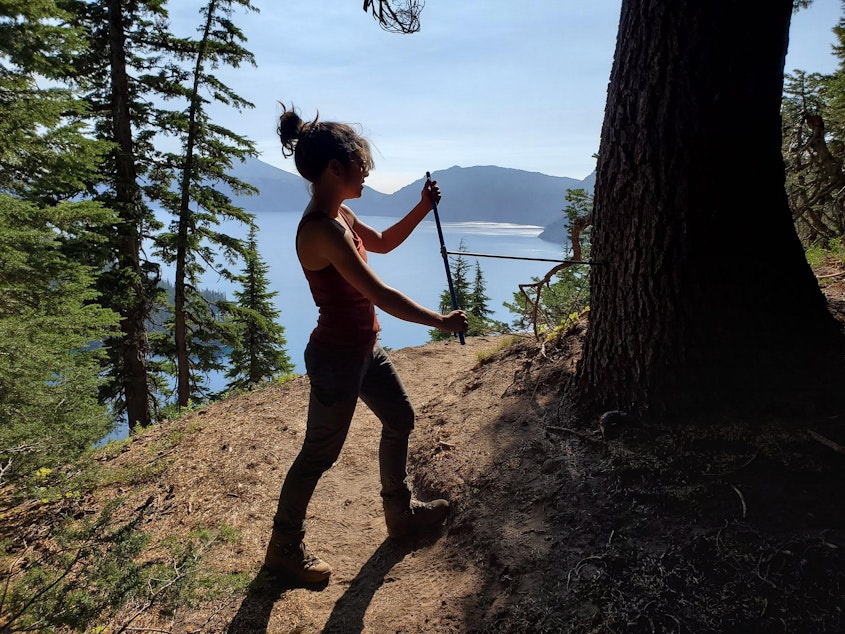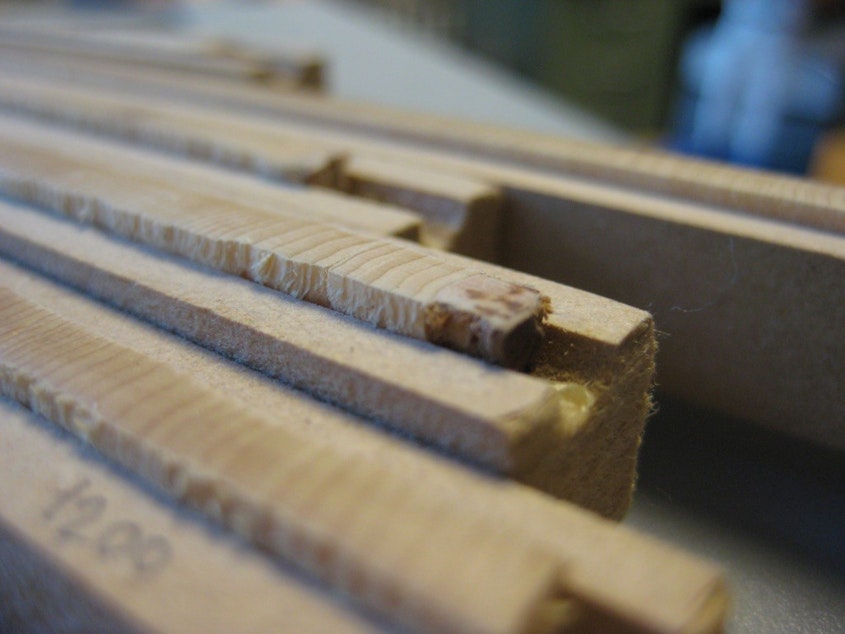Northwest’s hottest summer in 1,000 years revealed by tree rings

The summer of 2021 was the Northwest’s hottest in at least 1,000 years, according to a new study of some very old trees.
In June 2021, Karen Heeter was living in a two-story brick apartment building with no air conditioning in Moscow, Idaho. She was finishing her University of Idaho dissertation, using tree rings from across North America to reconstruct ancient temperatures.
A two-week heat wave beginning that month shattered temperature records around the Northwest and killed an estimated 1,200 people.
Heeter’s apartment hit 105 degrees.
“It was really deadly hot inside,” Heeter said. “The best we could do was, during the day, close the curtains and leave the hallway door cracked.”
With her apartment unlivable and her field work – driving and hiking to remote locations to hand-drill pencil-diameter cores from massive conifer trunks – too dangerous in the heat and accompanying wildfires, Heeter spent a lot of time swimming in a reservoir instead.
Sponsored
Eventually, she was able to complete her research and steer it toward the modern crisis of human-caused climate change as well as documenting natural, ancient conditions.
“You start thinking about elderly folks or people that can't get outside because of mobility issues,” she said. “It was a wake-up call for me for sure.”

It’s common knowledge that counting a tree’s annual rings reveals its age. The practice is known as dendrochronology. Those yearly growth layers can also reveal some of the conditions a tree has lived through from year to year.
Sponsored
In the Northwest, where conifers commonly live many centuries, there’s a record written in wood of much of the region’s past.
“Trees are really excellent record keepers,” Heeter said.
Researchers say trees can’t document individual days’ or weeks’ temperatures. But in the right locations, the thickness and color of trees’ dark rings, known as latewood, can accurately track how warm a season was, even centuries ago.
“What the tree rings are saying is that we can document summer averages back through time,” said Heeter, now a post-doctorate tree-ring researcher at Columbia University's Lamont-Doherty Earth Observatory.
Over the past millennium, the Northwest’s summer temperatures have fluctuated but were never as hot as those of the 21st century, with 2021 off the charts, Heeter and colleagues found in their study of spruce, hemlock, and Douglas-fir trees.
Sponsored
Even the Northwest’s 1,000-year-old trees had never lived through a summer as extreme as they did two summers ago.
“Summer 2021 was the warmest it's been. It's super, highly unlikely, but it happened,” Heeter said.
Fossil-fuel emissions have driven the climate in the Northwest and worldwide into unprecedented territory. A peer-reviewed “rapid attribution” study concluded the Northwest’s 2021 heat wave would have been “virtually impossible” without human-caused climate change.
“Trees are not thermometers, and they're not rain gauges. They are biological organisms trying to do their thing,” said Andy Bunn, a Western Washington University climate researcher who was not involved in Heeter’s study.
In doing their thing, trees that grow more will lay down thicker cell walls. Those appear as darker, bluer-tinted lines in the grain of the tree’s wood.
Sponsored
Heeter and her colleagues measured the width and the blueness of rings from hundreds of trees in 17 high-elevation locations around the Northwest states and British Columbia.
In the Pacific Northwest, growth near tree line is limited by summer temperatures. Hotter summers in the mountains yield more growth and bluer latewood rings.
Bunn said the new study adds “a tremendous amount” to the understanding of past climates in the Northwest.
“To find these very long-lived trees and build these records that go back over 1,000 years in this case takes a huge amount of work,” Bunn said.
Heeter said the process of drilling and extracting a pencil-thin core, a bit like extracting a cork from a wine bottle, does not harm the trees and does not require strength so much as precise technique. As with a corkscrew, good aim is essential to reach a tree’s innermost growth ring.
Sponsored
She said trees are not perfect cylinders, making hitting the center harder than most people think.
Heeter said she and her students and field assistants have a healthy competition going for who has the longest streak of consecutive “hit the center” samples.
Even with the aid of high-resolution scanning technology, eyeballing and measuring hundreds of tree rings to the nearest micrometer can be tedious and taxing.
“My glasses prescription has changed so drastically during the Ph.D.,” Heeter said.
Eastern Washington University dendrochronologist Lauren Stachowiak, who was not involved in the study, called it “quite groundbreaking.”
“People living in this region need to know that not only was the 2021 heatwave unprecedented, the conditions that led to its creation have not changed and are likely to get worse,” Stachowiak said by email.
Decades of fossil-fuel pollution have made extreme heat more likely.
The new study says summers as hot as 2021 could happen half the time by mid-century if humans continue to pump heat-trapping pollution into the atmosphere.
“We can expect the general experience of this 2021 summer to be a very common occurrence in the near future if we don't curb our anthropogenic emissions,” Heeter said.
The oldest tree rings analyzed by the researchers came from a Douglas-fir that began as a seedling in the year 950 near Great Central Lake on Canada’s Vancouver Island.
When Christopher Columbus bumped into North America, that tree had already put on 542 yearly rings.
Columbia University researcher Gordon Jacoby hand-drilled pencil-thin cores, 1,041 rings long, from the millennial conifer in 1991. The ancient tree and its neighbors on forestland owned by MacMillan Bloedel, then Canada’s largest forest products company, were cut down a few years later.
The new study appears in the journal npj Climate and Atmospheric Science.




